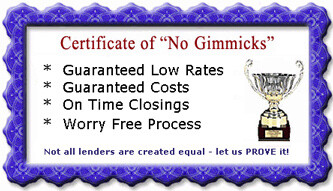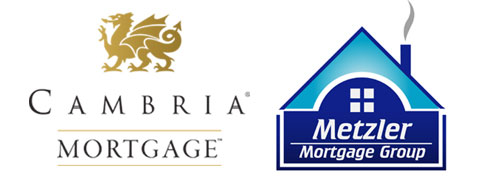-
Share via:
(651) 552-3681
Home Purchase - Home Refinance
Serving MN WI IA ND SD CO FL
- Home
- Reviews
- Apply
- Quick Qualify
- Rates & Costs
- Loan Programs
- Bad Credit Loans
- Buying a House
- Commercial / Apartment
- Doctor Loans
- FHA Loans
- Down Payment Assistance
- First Time Home Buyer
- HomeReady
- Investor DSCR Loans
- Luxury home financing
- Jumbo Loans
- Loans for Self Employed
- New Construction Loans
- No Down Payment Loans
- No Doc / Non-QM
- Refinancing
- Contract for Deed Refi
- Renovation Loans
- USDA Loans
- VA Loans
- Client Resources
- After BK or Foreclosure
- The Home Loan Process
- Daily Mortgage News
- Your credit score
- Student loans
- Homebuyer Classes
- Mortgage FAQ
- Glossary of Mortgage Terms
- Use a Bank or Broker?
- Fixed or ARM
- Home Buyers Guide
- Mortgage Rate Locks
- Long Term Rate Locks
- Mortgage Loan Limits
- No Closing Cost Loans
- Get a Second Opinion
- Tips for a smooth closing
- Top Mortgage Mistakes
- Foreclosures / Short Sales
- How to buy foreclosures
- Well and Septic
- Beware Predatory Lenders
- About
- Blog
- My Acct
Navigation- Home
- Reviews
- Apply
- Quick Qualify
- Rates & Costs
- Loan Programs
- Bad Credit Loans
- Buying a House
- Commercial / Apartment
- Doctor Loans
- FHA Loans
- Down Payment Assistance
- First Time Home Buyer
- HomeReady
- Investor DSCR Loans
- Luxury home financing
- Jumbo Loans
- Loans for Self Employed
- New Construction Loans
- No Down Payment Loans
- No Doc / Non-QM
- Refinancing
- Contract for Deed Refi
- Renovation Loans
- USDA Loans
- VA Loans
- Client Resources
- After BK or Foreclosure
- The Home Loan Process
- Daily Mortgage News
- Your credit score
- Student loans
- Homebuyer Classes
- Mortgage FAQ
- Glossary of Mortgage Terms
- Use a Bank or Broker?
- Fixed or ARM
- Home Buyers Guide
- Mortgage Rate Locks
- Long Term Rate Locks
- Mortgage Loan Limits
- No Closing Cost Loans
- Get a Second Opinion
- Tips for a smooth closing
- Top Mortgage Mistakes
- Foreclosures / Short Sales
- How to buy foreclosures
- Well and Septic
- Beware Predatory Lenders
- About
- Blog
- My Acct
What is APR? How does APR work?
APR basically takes the base interest rates, calculates closing costs, and mortgage insurance if applicable, and gives you a new interest rate, known as the effective rate. Technically, the lower the number, the better the deal. If two lender quote you the exact same (base) rate, the lender with the lower APR is supposed to be a better deal. If the lenders are playing fair, this works well in giving you accurate information.
If the two lenders are quoting different interest rates, then comparing the loans with the APR calculation is totally misleading.
Furthermore, the APR calculation only keeps the monthly payment information the same. Instead of the mortgage amount, APR uses "amount financed." This is the "amount financed" information on the Truth in Lending statement. Amount financed takes into consideration the fees that are lender imposed, such as application fees, points, commitment fees, and interim or per diem interest. So, amount financed is the mortgage amount less any lender fees, points, and interim interest. The more fees, the lower the amount financed. The monthly payment is then calculated as a product of the amount financed to give you the annual percentage rate or APR. So, the lower the amount financed, the higher the APR is. Amount financed can be manipulated by assuming a closing on the last day instead of the first day of the month. That would increase the amount financed and decrease the APR.
Here is a real example on a $150,000 fixed rate 30-year mortgage: Lender A is offering a great low rate of 4.250 percent and $3000 in closing costs, Lender B is offering a higher rate of 4.625 percent and no closing costs. The payment difference between the two is $34 per month. So is it worth paying $3,000 in closing fees to Lender A in order to save $34 per month?
In this example, it will take a little over 7-years to break even on the additional up-front closing costs. If you are going to be in the home less than 7-years, this is a good choice. If you are going to be in the home 20-years, this may be a bad choice.
To make the decision even more complicated (if that's possible), borrowers rarely take the value of to day's dollars and cash flow into account. If you are going to be in the home 20+ year, but you don't really have the additional $3,000 costs, now what? Is it more important to have a lower rate today, or keep that cash in your pocket today?
Choosing your mortgage loan by APR can COST YOU MONEY
A borrower shopping for the best mortgage rate can easily be seduced by low rate offers that are accompanied by low annual percentage rates (APR). Federal law requires that APR be disclosed along side the actual interest rate as a means to help borrowers make a more informed decision on their mortgage.
The truth is that APR is a very poor way to comparison shop for a mortgage and can cause borrowers to make costly decisions. APR was created to provide a way for borrowers to account for closing costs associated with the getting a mortgage loan. This sounds good in theory because it may not be very easy to choose between a loan with a lower rate and higher fees, or a loan at a higher interest rate with low fees.
The problem is that the APR calculation is based on bad assumptions.
First, APR assumes zero inflation, and that the value or buying power of a dollar today will be exactly equal to the value of a dollar 10, 20, or even 30-years from now.Next, the APR calculation assumes that the mortgage will never be pre-paid or paid. That means no refinancing or selling the home. This is highly unlikely since the average life of a home mortgage loan is less than seven years. Just think about your own loans: Is it rare to see the same loan in place for even just five years for many people.
The APR calculation does not consider the value of the money used for fees. So if you spent thousands of dollars in discount points or higher closing cost fees to get a lower rate, the APR calculation does not give any value to the money if it wasn't spent on closing costs.
APR does not take tax consequences into consideration. This can be significant, since higher closing costs on the mortgage loan may not be deductible, while the higher interest rate typically is deductible.
Finally, APR can be easily manipulated by bad lenders, making it totally worthless for real life comparisons.
The bottom line is that you should forget APR and think twice about those advertised low rates when they are accompanied by higher fees.

** EXPERIENCE MATTERS **
Top rated mortgage lender locally and nationally, year after year... This is because clients agree - Experienced Loan Officers with mortgage interest rates you can brag about and amazing service clearly sets us apart from the big banks and online lenders.
Address
33 Wentworth Ave E, St Paul, MN 55118
Contact
Main (651) 552-3681
Joe@JoeMetzler.com
Cell/Text (651) 705-6261We also call from
(651) 615-7545
(952) 486-6135License Info
Cambria Mortgage
NMLS# 322798 Branch:1888858Joe Metzler Loan Officer
NMLS# 274132. License MN #MLO-274132, WI #11418. SD #MLO.03095, ND #NDMLO274132, IA #36175, FL #LO119389, CO #100536785Privacy Policies | Disclaimers | Disclosures | Terms of Use | DMCA Notice | ADA Notice |

Equal Housing Lender. The Joe Metzler Team at Cambria Mortgage lends in Minnesota, Wisconsin, Iowa, North Dakota, South Dakota, Colorado, and Florida only. This is not an offer to lend or to extend credit, nor is this a guaranty of loan approval or commitment to lend. Information here can become out of date, and may no longer be accurate. Products and interest rates are subject to change at any time due to changing market conditions. Not all programs available in all states. Actual rates available to you may vary based upon a number of factors. Consumers must independently verify the accuracy and currency of available mortgage programs. All loan approvals are subject to the borrower(s) satisfying all underwriting guidelines and loan approval conditions and providing an acceptable property, appraisal and title report. Joe Metzler, NMLS 274132, Cambria Mortgage NMLS 322798. © 1998 - 2024.









